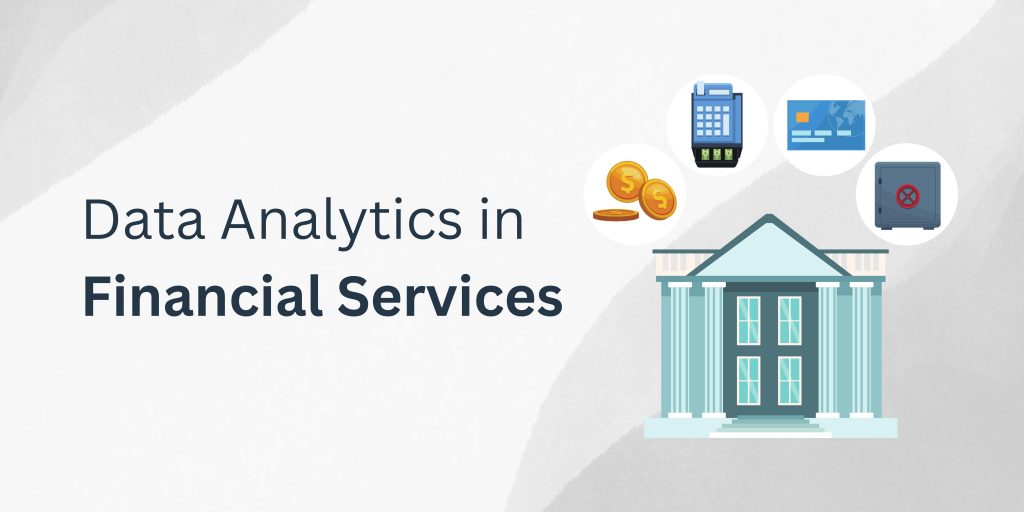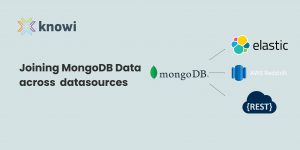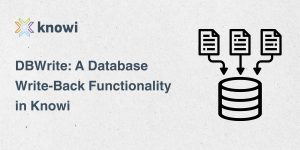Data analytics plays a transformative role in the financial sector, impacting various facets of the industry. It has become a cornerstone in the financial sector, providing a blueprint for decision-making, risk management, and customer satisfaction. This sector deals with vast amounts of data. It requires efficient analytical tools and techniques to decipher complex patterns, predict market trends, and make informed decisions. This blog explores how data analytics is currently being utilized in the financial sector, the key trends shaping its future, and the challenges it faces.
Data Analytics use cases in the Financial Sector
- Risk Management
Financial institutions leverage data analytics for risk assessment, identifying potential defaulters, and devising strategies to mitigate losses. By analyzing past transactions and market trends, banks also predict future risks with greater accuracy.
- Customer Personalization
Through data analytics, banks offer personalized banking experiences to customers. By understanding spending habits, income levels, and personal preferences, financial services can tailor products and advice to individual needs, enhancing customer satisfaction and loyalty.
- Fraud Detection and Prevention
Data analytics plays a crucial role in identifying unusual patterns that may indicate fraudulent activity. By constantly monitoring transactions in real-time, financial institutions can quickly flag and investigate suspicious activities, minimizing financial losses.
- Algorithmic Trading
In the stock market, data analytics is used for algorithmic trading. By analyzing market data, trends, and news, algorithms can execute trades at optimal times, maximizing profits and reducing losses.
Trends in Financial Data Analytics:
- Augmented Analytics
Augmented analytics is a type of analytics that uses artificial intelligence (AI) and machine learning (ML) to make data easier to understand. This involves using advanced analytics to transform large sets of structured and unstructured data into actionable insights by offering sophisticated predictive models, improving risk management, customer service, and operational efficiency.
- Edge Computing
Edge computing represents a pivotal shift in data processing by bringing computation closer to the source of data generation, thus offering a range of benefits crucial for today’s data landscape. In the financial services industry, edge computing emerges as a crucial technological advancement. It offers banks and investment sectors significant opportunities to enhance customer service, improve security, reduce operational costs, and comply with regulatory standards while also gaining a competitive edge in algorithmic trading through reduced latency. With applications ranging from hyper-personalized customer engagement and real-time cybersecurity analytics to facilitating high-frequency trading (HFT) and ensuring data sovereignty for compliance, edge computing enables the financial industry to address the challenges of a digital and data-intensive market. By leveraging edge computing solutions, financial institutions can achieve a substantial return on investment in a highly competitive environment, driving profitability through innovation in service delivery and operational efficiency.
- Blockchain Technology
Blockchain is emerging as a transformative technology for secure and transparent financial transactions. It not only enhances security but also improves the efficiency of transactions, reducing the need for intermediaries. Despite challenges such as scalability and regulatory integration, blockchain’s potential to revolutionize financial transactions—making them more efficient, secure, and cost-effective—continues to capture the attention of industries worldwide, signaling a significant shift towards more transparent and trust-based financial systems.
- Regulatory Technology (RegTech)
Regulatory Technology (RegTech) is a dynamic sector within financial technology that addresses the growing complexity and scope of regulatory compliance through advanced technological solutions. By using the power of data analytics, artificial intelligence, machine learning, and blockchain, RegTech streamlines and enhances the compliance process, making it more efficient, accurate, and agile. This technology enables financial institutions to automate the monitoring and reporting of compliance data, significantly reducing the risk of non-compliance and associated costs. As regulatory demands continue to evolve globally, financial institutions that leverage RegTech solutions not only gain a competitive edge by minimizing compliance risks and costs but also contribute to the integrity and stability of the financial ecosystem.
Challenges
- Data Privacy and Security
As financial institutions collect and analyze vast amounts of customer data, ensuring data privacy and security is paramount. The sector faces the challenge of protecting sensitive information from breaches and cyber-attacks.
- Data Quality and Integration
The effectiveness of data analytics depends on the quality and integration of data. Financial institutions often grapple with disparate data sources, requiring significant effort to clean, integrate, and standardize data for meaningful analysis.
- Algorithmic Bias
Algorithms play a substantial role in many aspects of financial services, from credit scoring and loan approvals to investment strategies and insurance premiums. Biased algorithms can lead to discriminatory practices, such as denying loans to qualified applicants or offering them at higher interest rates based on race, gender, or other irrelevant factors.
- Regulatory Compliance
As financial institutions increasingly leverage data for decision-making—from credit assessments to investment strategies—compliance becomes critical in safeguarding consumer interests and maintaining market integrity. As regulations evolve to meet new challenges, such as cybersecurity threats and emerging technologies, the finance sector must remain vigilant, ensuring continuous adherence to legal requirements while fostering innovation and growth.
Essential Data Analytics Capabilities for the Financial Sector
For the financial sector to fully leverage data analytics, certain capabilities are indispensable in analytical tools they use. These capabilities not only enhance the efficiency of data analysis but also ensure that insights are actionable and aligned with the sector’s unique needs. Here’s a breakdown of these critical capabilities:
- Real-Time Data Processing
The ability to process and analyze data in real-time is crucial for financial institutions. This capability enables immediate detection of fraudulent activities, market movements, and customer interactions, allowing for swift decision-making and action.
- Advanced Predictive Analytics
Tools equipped with advanced predictive analytics can forecast future trends, behaviors, and events with significant accuracy. In the financial sector, this means predicting market fluctuations, credit risk, and customer behavior, enabling proactive rather than reactive strategies.
- Scalability
As financial institutions handle massive and ever-growing datasets, analytics tools must be scalable. They should handle increased data volumes without compromising performance, ensuring that insights remain timely and relevant.
- Data Visualization
Complex financial data becomes more accessible and actionable through intuitive data visualization. Dashboards, heat maps, and graphs allow stakeholders to quickly grasp trends, patterns, and anomalies, facilitating informed decision-making.
- Security and Data Governance
Tools must have robust security protocols and data governance capabilities to protect sensitive financial information and ensure it’s used ethically and legally. This includes encryption, access controls, and audit trails.
- Integration with Existing Systems
For seamless operations, analytics tools should easily integrate with existing banking systems and software. This ensures that data flows smoothly across platforms, enhancing efficiency and reducing the risk of errors.
By equipping themselves with analytical tools that have these capabilities, financial institutions can navigate the complexities of the modern financial landscape more effectively. These tools not only support the sector’s immediate operational needs but also drive long-term strategic growth through deeper insights and improved decision-making processes.
Data analytics in the financial sector is a powerful tool that drives strategic decisions, enhances customer experiences, and mitigates risks. As the sector navigates the current trends and challenges, the adoption of advanced analytical tools and technologies will be crucial for its continued evolution and success. By investing in data analytics capabilities, financial institutions can unlock new opportunities for growth and innovation, positioning themselves competitively in the rapidly evolving financial landscape.






